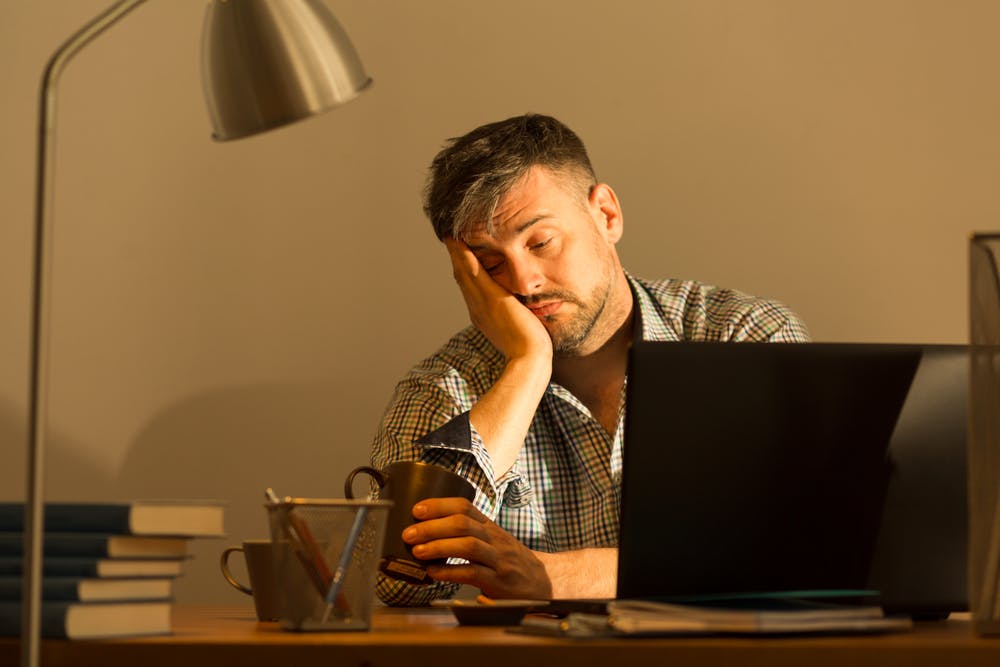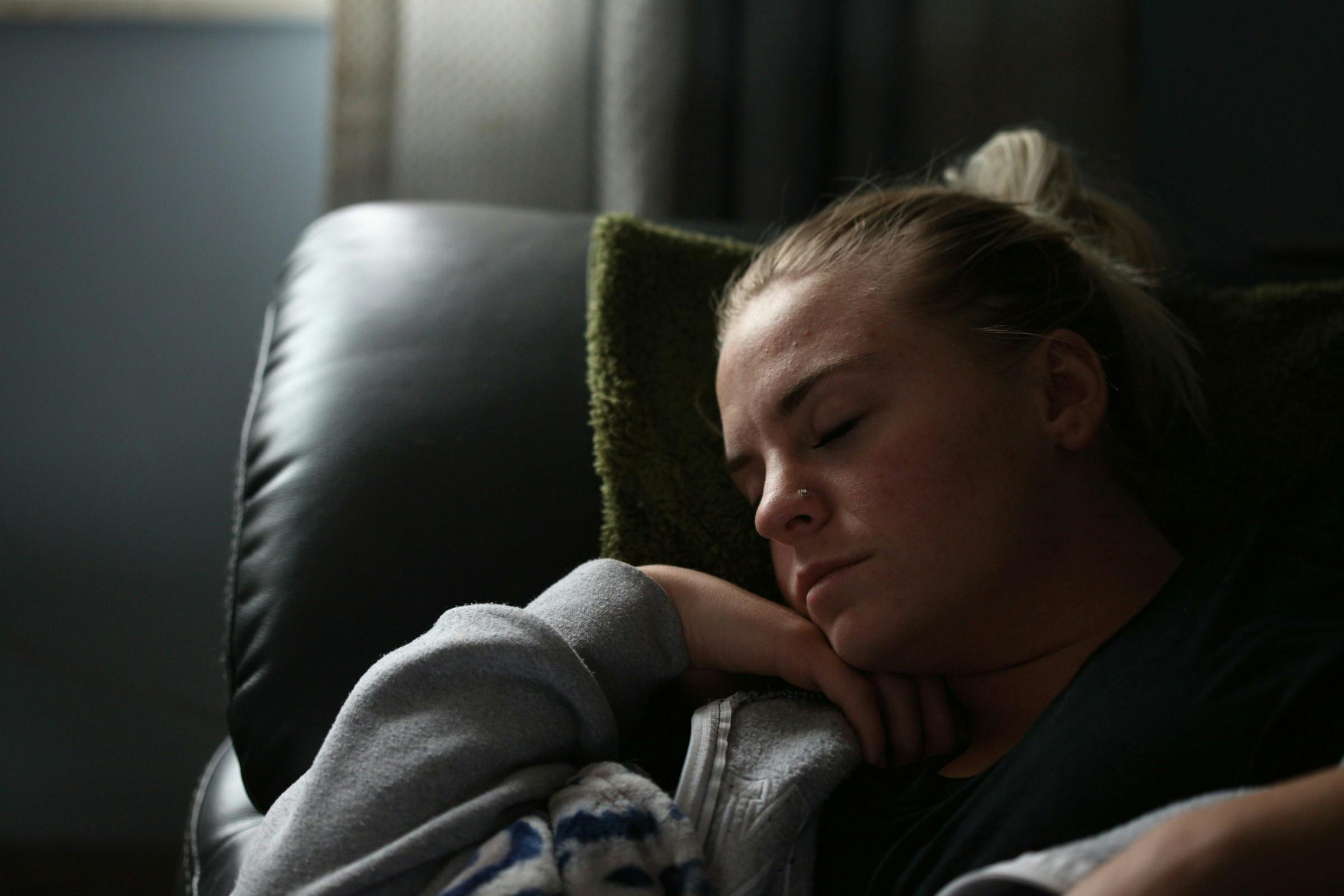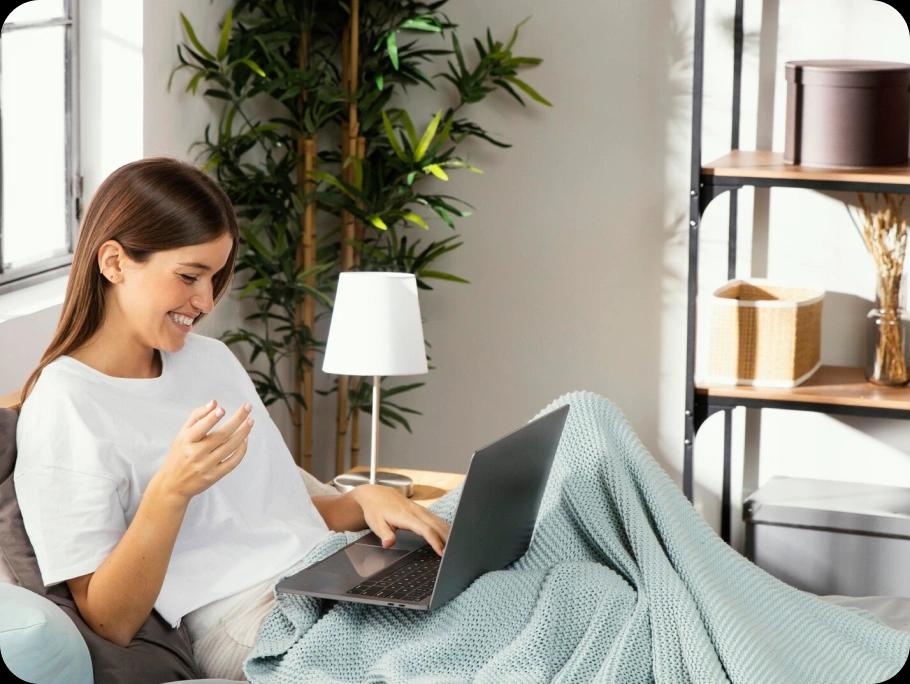Microsleep: What It Is, Why It Happens, and How to Prevent It
By Dr. Priyali Singh, MD
Reviewed by Kenya Bass, PA-C
Published Sep 3, 2025
10 min read

Have you ever caught yourself nodding off for just a few seconds while watching TV, sitting in class, or even driving? You might not even remember drifting off, but when you “snap back,” you realize you missed a few moments. That brief lapse is called microsleep, and while it may sound harmless, it can actually be dangerous—sometimes even life-threatening.
Microsleep is surprisingly common, yet many people don’t know much about it. The truth is, these short bursts of involuntary sleep can affect anyone, especially if you’re sleep-deprived, stressed, or doing something repetitive. Understanding what microsleep is, why it happens, and how to prevent it can help protect not only your health but also your safety and the safety of those around you.
In this article, we’ll break down everything you need to know about microsleep in a simple, easy-to-digest way. We’ll cover the science behind it, its warning signs, risks, prevention strategies, and when to seek medical help.
What Is Microsleep?
Microsleep is exactly what it sounds like: tiny episodes of sleep that last only a few seconds, usually from less than one second up to 30 seconds. Unlike regular sleep, which you consciously enter, microsleep happens without your control. One moment you’re awake, and the next your brain switches into sleep mode—even if your eyes are open.
What makes microsleep tricky is that most people don’t realize it’s happening. You may think you’re just zoning out or daydreaming, but during microsleep, parts of your brain are actually shutting down briefly. That’s why you might suddenly “lose track” of a conversation, forget reading a line of text, or drift off while driving without remembering the last few seconds.
It’s different from daydreaming, which is more about your mind wandering while you’re still awake. Microsleep, on the other hand, is genuine sleep, even if it’s just for a blink of an eye.
The Science Behind Microsleep
To understand microsleep, we first need to understand how sleep pressure builds in the brain. Think of your need for sleep like a balloon slowly filling with air. The longer you stay awake, the more “air” (or pressure) builds up. Eventually, the balloon gets so full that it needs to release—and that’s when your body forces you into sleep.
Microsleep is essentially your brain’s emergency response when that balloon is dangerously full. Even if you’re trying to stay awake, your brain can override you and shut down for a few moments to protect itself.
Scientists believe microsleep is linked to changes in the thalamus and prefrontal cortex—areas responsible for alertness, decision-making, and attention. During these brief episodes, parts of your brain act as if you’re asleep while others remain awake. That’s why you might still be sitting upright or driving a car but have no memory of what just happened.

Circadian rhythm—the body’s natural sleep-wake cycle—also plays a role. If you’re awake at times when your body expects sleep (like late at night or early morning), you’re more vulnerable to microsleep.
Common Causes of Microsleep
So, why does microsleep happen in the first place? The most common reason is sleep deprivation. When you don’t get enough quality sleep, your body starts “stealing” rest whenever it can, even for just a few seconds. But sleep loss isn’t the only cause.
Poor sleep quality is another factor. Even if you spend eight hours in bed, conditions like sleep apnea, insomnia, or restless legs syndrome can prevent you from getting restorative sleep. That leaves you just as tired as someone who barely slept.
Monotonous or repetitive tasks—such as driving on a long highway, reading a textbook, or working on an assembly line—also increase the risk. Your brain gets bored and starts to “power down” for short intervals.
Irregular schedules, like those faced by shift workers or frequent travelers, throw off the body’s circadian rhythm. Without consistency, your brain struggles to stay alert when it needs to.
Finally, underlying sleep disorders can make microsleep episodes much more frequent and severe. People with narcolepsy, for instance, may experience sudden sleep episodes even when they’re not particularly tired.
RELATED READ: Post-Meal Drowsiness: The Real Science Behind Why You Get Sleepy After Eating (and How to Stay Energized)
Symptoms and Warning Signs of Microsleep
One of the challenges with microsleep is that you often don’t notice it until after it happens. Still, there are warning signs to watch for.
You may feel your eyelids getting heavier, your head nodding forward, or your body jerking suddenly as you snap back awake. Sometimes, your eyes may even stay open, but your mind “blanks out.”
Other times, you might realize you missed part of a conversation or can’t remember what you just read. If you’re driving, you may drift out of your lane, miss a turn, or suddenly find yourself farther down the road without recalling the last stretch.
Reaction times also slow dramatically during microsleep, which is why it’s so risky in situations that require attention.
Why Microsleep Can Be Dangerous
Microsleep might not sound like a big deal—after all, it’s just a few seconds. But in many real-life situations, those few seconds can be the difference between life and death.
Take driving, for example. If you’re traveling at 60 miles per hour, a five-second microsleep means your car has moved the length of a football field without you paying attention. That’s enough to miss a stop sign, veer into another lane, or crash into a car in front of you.
Microsleep is also a major problem in workplaces that involve machinery, healthcare, or aviation. Imagine a surgeon nodding off for just a few seconds during a procedure, or a pilot losing focus mid-flight. The risks are enormous.
Even in everyday life, microsleep can be harmful. You could burn yourself while cooking, trip and fall while walking, or miss critical instructions in class or at work.
Who Is Most at Risk?
While anyone can experience microsleep, certain groups are more vulnerable. Drivers—especially long-haul truck drivers or anyone traveling late at night—are at the top of the list. Students often face it too, thanks to late-night studying, irregular sleep, and early classes.
Shift workers, such as nurses, factory workers, and emergency responders, are at constant risk because their schedules disrupt the natural sleep cycle.
Parents of newborns, who often survive on fragmented sleep, are another group that frequently experiences microsleep.
And of course, people with sleep disorders like sleep apnea, insomnia, or narcolepsy are especially prone.
How to Prevent Microsleep
The good news is that microsleep can be managed and often prevented with healthy habits. The most important step is prioritizing sleep. Adults generally need seven to nine hours of quality sleep each night, though individual needs vary.
Good sleep hygiene helps too. That means going to bed and waking up at the same time each day, creating a relaxing bedtime routine, keeping your bedroom dark and cool, and avoiding screens right before sleep.
If you’re driving or doing something repetitive, taking regular breaks is crucial. Even a short five-minute stop to stretch, walk around, or get fresh air can make a big difference.

Short naps can also help, especially if you’re feeling drowsy during the day. A 15–20 minute nap can restore alertness without leaving you groggy. Longer naps can be useful too, but they may interfere with nighttime sleep if taken too late.
Lifestyle factors matter as well. Caffeine can temporarily boost alertness, but it should be used wisely—too much, especially late in the day, can backfire and ruin nighttime sleep. Regular exercise and a balanced diet support overall sleep health.
RELATED READ: Does Turkey Really Make You Sleepy? Best Foods to Help You Sleep Better (Backed by Science)
When to See a Doctor
If microsleep episodes are frequent, or if you feel excessively sleepy during the day despite getting what seems like enough rest, it may be time to seek medical help.
A doctor can check for underlying conditions like sleep apnea, narcolepsy, or insomnia. Sometimes, treatments such as CPAP therapy, medication, or cognitive-behavioral therapy for insomnia (CBT-I) can make a huge difference.
Don’t ignore persistent sleepiness. Your body is trying to tell you something, and addressing it early can prevent bigger problems down the road.
Key Takeaways: Living Microsleep-Free
Microsleep may only last a few seconds, but its impact can be far-reaching. It’s the body’s way of forcing rest when you’re running on empty, and while it may seem harmless, it can put you and others at serious risk—especially while driving or working.
The best defense is simple: get enough quality sleep, build healthy sleep habits, and pay attention to your body’s warning signs. If daytime sleepiness persists, don’t hesitate to talk to a doctor.
Better sleep isn’t just about avoiding microsleep. It’s about boosting your energy, improving your focus, protecting your health, and living a safer, more vibrant life.
Frequently Asked Questions About Microsleep
1. How long does microsleep usually last?
Microsleep episodes are very short, typically lasting anywhere from a fraction of a second to about 30 seconds. Most people experience them for just a few seconds at a time. Even though they’re brief, those lost moments can be risky—especially if you’re driving or doing something that requires focus.
2. Can you have microsleep with your eyes open?
Yes. That’s part of what makes microsleep so dangerous. Sometimes your eyes remain open and you may even appear awake, but your brain is partially “offline.” This means you might miss details, react too slowly, or fail to remember what just happened.
3. Is microsleep the same as narcolepsy?
No. Microsleep and narcolepsy are different conditions, although both involve sudden sleep episodes. Microsleep usually happens because of sleep deprivation or poor sleep quality, while narcolepsy is a neurological disorder that causes uncontrollable sleep attacks even when a person is well-rested.
4. Can microsleep happen while driving short distances?
Absolutely. Many people assume microsleep only happens on long road trips, but that’s not true. Even during a quick drive to the store, if you’re very sleep-deprived, your brain can slip into a microsleep episode. That’s why experts warn against driving when you’re drowsy, no matter how short the trip.
5. Is microsleep more common at night or during the day?
Microsleep can happen at any time, but it’s more likely when your circadian rhythm is signaling that your body should be resting. That usually means late at night, very early in the morning, or mid-afternoon when many people feel the “afternoon slump.”
6. Does caffeine prevent microsleep?
Caffeine can help you stay alert for a while, but it’s not a cure for sleep deprivation. It may delay microsleep, but it doesn’t eliminate the brain’s need for real sleep. Relying only on coffee or energy drinks often backfires, leading to worse fatigue later.
7. Can children or teenagers experience microsleep?
Yes, and they often do. Teenagers are especially vulnerable because they tend to stay up late, wake up early for school, and sometimes don’t get the recommended 8–10 hours of sleep. Microsleep can make it harder for them to focus in class or stay safe while learning to drive.
8. How do doctors test for microsleep or excessive sleepiness?
Doctors may use sleep studies such as the Multiple Sleep Latency Test (MSLT) to measure how quickly someone falls asleep in a quiet environment. They may also check for sleep disorders like sleep apnea. Sometimes wearable devices or driving simulators are used in research to detect microsleep events.
9. Can meditation or mindfulness reduce microsleep?
Mindfulness and meditation can improve focus and mental clarity, but they don’t replace sleep. In fact, if you’re very tired, meditation may actually make you more likely to doze off. The only reliable way to prevent microsleep is to get enough restorative sleep.
10. Is microsleep dangerous if it happens while studying or watching TV?
It’s not life-threatening in those situations, but it can still affect your learning, memory, and productivity. If you keep dozing off during passive activities like reading or watching TV, it’s a clear sign your body needs more rest—and ignoring it could eventually put you at risk in more critical situations.
Share this article

Sleep Hygiene: Proven Habits for Better Sleep, Energy, and Health
Lilian E.
Sep 28, 202512 min read

Low Sodium Diet: Simple Guidelines, Food Lists, and Tips for Better Health
Lilian E.
Sep 30, 202512 min read

Tips for Staying Healthy: 12 Simple Habits for Energy, Longevity, and Better Living
Editorial Team
Sep 30, 202510 min read

Best-in-class care is a click away
Find everything and everyone you need to reach your metabolic health goals, in one place. It all makes sense with Meto.
Join Meto